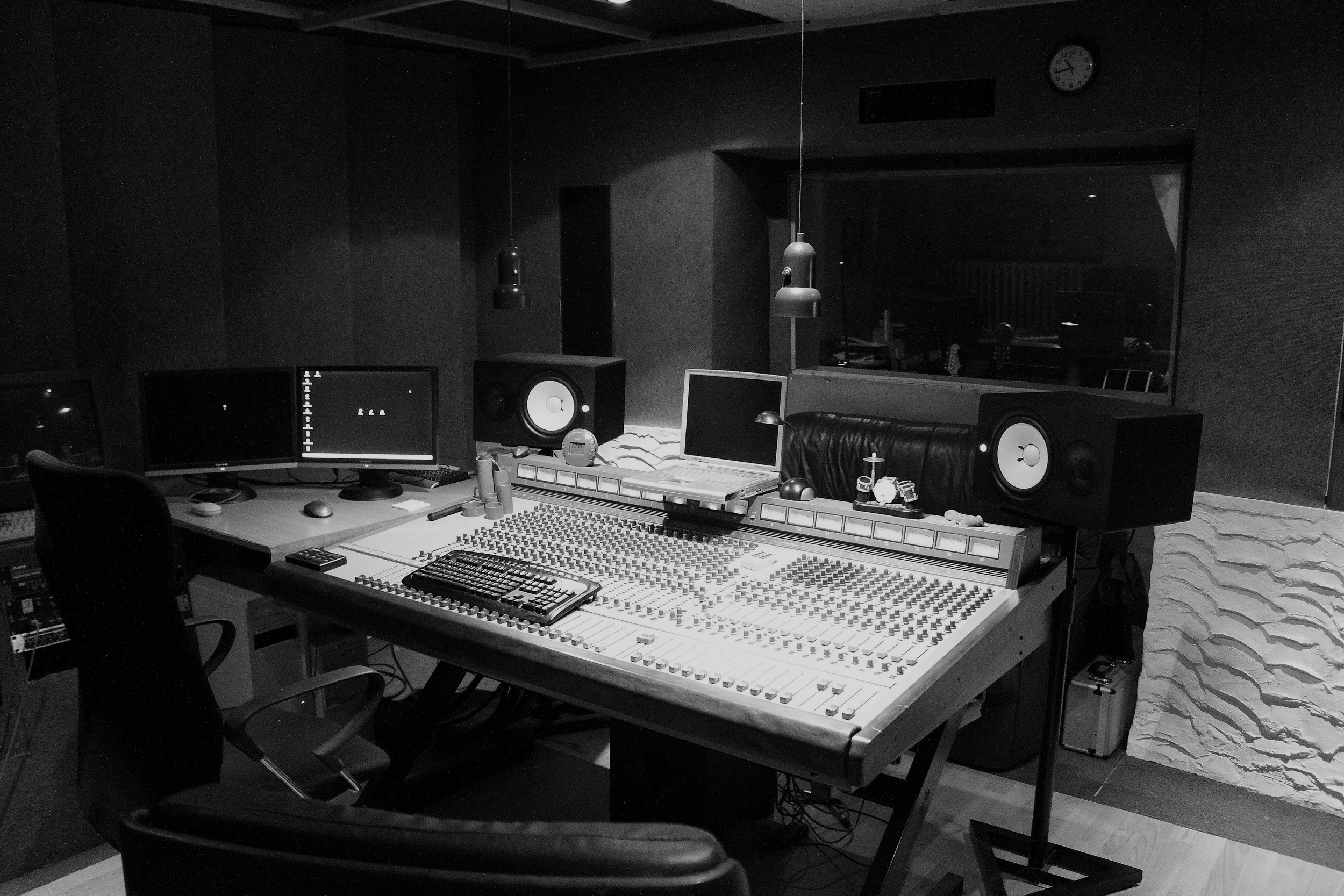Q. What are the benefits of acoustic treatment in commercial environments?
A. Primarily better speech intelligibility. In a meeting room you will be able to hear the quietest speaker and easily understand what everybody around the table says. You will be able to hear the person on the phone even in a busy open plan office. You won't be interupted by the noisy group at the table next to you in a restaurant. Patrons and staff will enjoy the environment in your office, bar or restaurant and your visitor numbers will increase accordingly.
Q. What are the benefits of acoustic treatment in a studio?
A. You hear more of the sound from your speakers and less from the room. It makes listening to music in a room equivalent or better than listening through the best headphones. Specifically:
Enhancement of the stereo field left to right and back to front with each track in the mix clearly identified and positioned.
Reduction of modes (peaks at specific frequencies) and nulls (specific frequencies missing at points in a room). These two significant audio problems occur (typically in the lower mids and bass frequencies) in every small to medium sized acoustically untreated room.
Fixing these two problems in a home or professional studio can often halve the mixing and mastering time.
Q. Which types of rooms most need acoustic treatment?
A. All restaurants, meeting rooms, gymnasiums, open plan offices and bars need treatment. Home theatres may also benefit from some treatment. All studios (professional and home) definitely need significant treatment.
Q. What is NRC?
A. NRC (Noise Reduction Coefficient) is the standard measure of a materials's ability to absorb sound and is measured from 0 to 1 with 1 being 100% absorption.
Q. How many sound absorption panels do I need?
A. For most commercial applications you need to cover around 36% of the ceiling area. For home cinemas, listening rooms, home, professional recording and mixing studios - it is not the percentage of walls and ceiling covered that counts it is the placement of the panels - see further details on our PET Panels Page
Q. Do thicker panels absorb more reflected sound?
A. Yes - slightly, however more importantly 50mm thick panels absorb up to 4 times the quantity of bass frequencies as 25mm panels. Both thicknesses absorb around the same quantity of mid and high frequency sound.
Q. What are bass traps?
A. Absorbant acoustic panels (typically 50mm to 100mm in thickness) which soak up significantly more bass reflections than thiner panels.
Q. Do bass traps reduce the amount of bass in music?
A. Yes, slightly however they also make bass sounds clearer i.e. you can identify each note and so they also enhance the quality of bass sound. In most small to medium sized music rooms and venues it is not possible to have too much bass trapping.
Q. Where do I place bass traps?
A. Across corners i.e. where two walls intersect and also in the top corners of the room where the walls and ceiling intersect.
Q. Why do you hang panels from the ceiling?
A. Because the space/gap behind a panel, whether a ceiling or corner panel, can double it's bass traping efficiency.
Q. Where do I position absorption panels in a studio?
A. The first priority is to reduce early reflections by positioning absorbant panels left, right and above the listening/ mixing position to clarify the stereo field. Use a mirror to position panels to cover the reflection of the front of your speakers as in this diagram.
The second priority is to reduce bass modes and nulls (uneven or missing bass volume at various parts of a room) using bass traps in all 4 corners.
Q. What Won't work?
Treatments that will not work; egg-cartons and polystyrene.
Treatments that will provide minor benefits; carpet, very thick curtains & soft furnishings.
The ridges or pyramids on studio foam have no acoustic properties at all.
